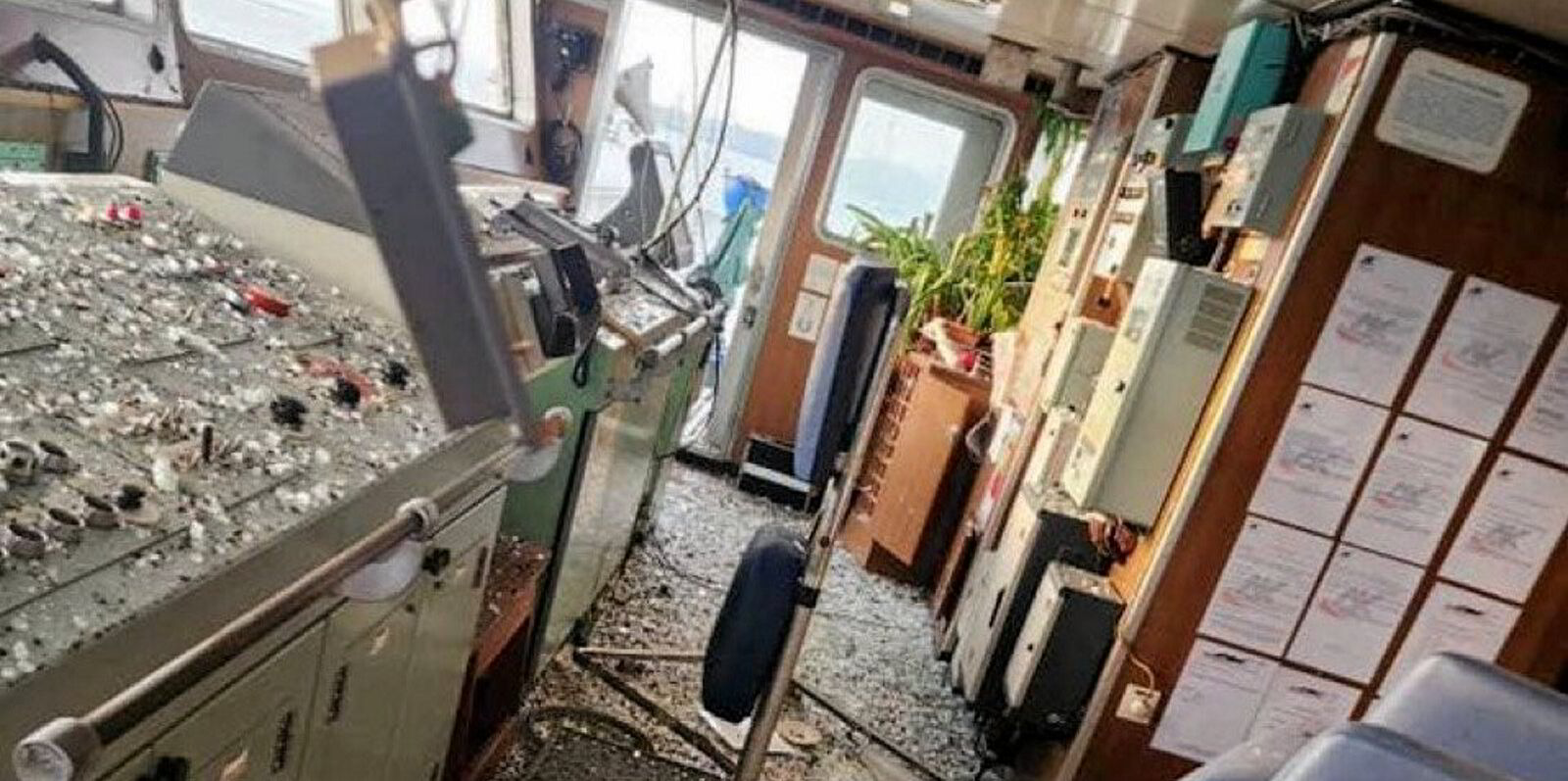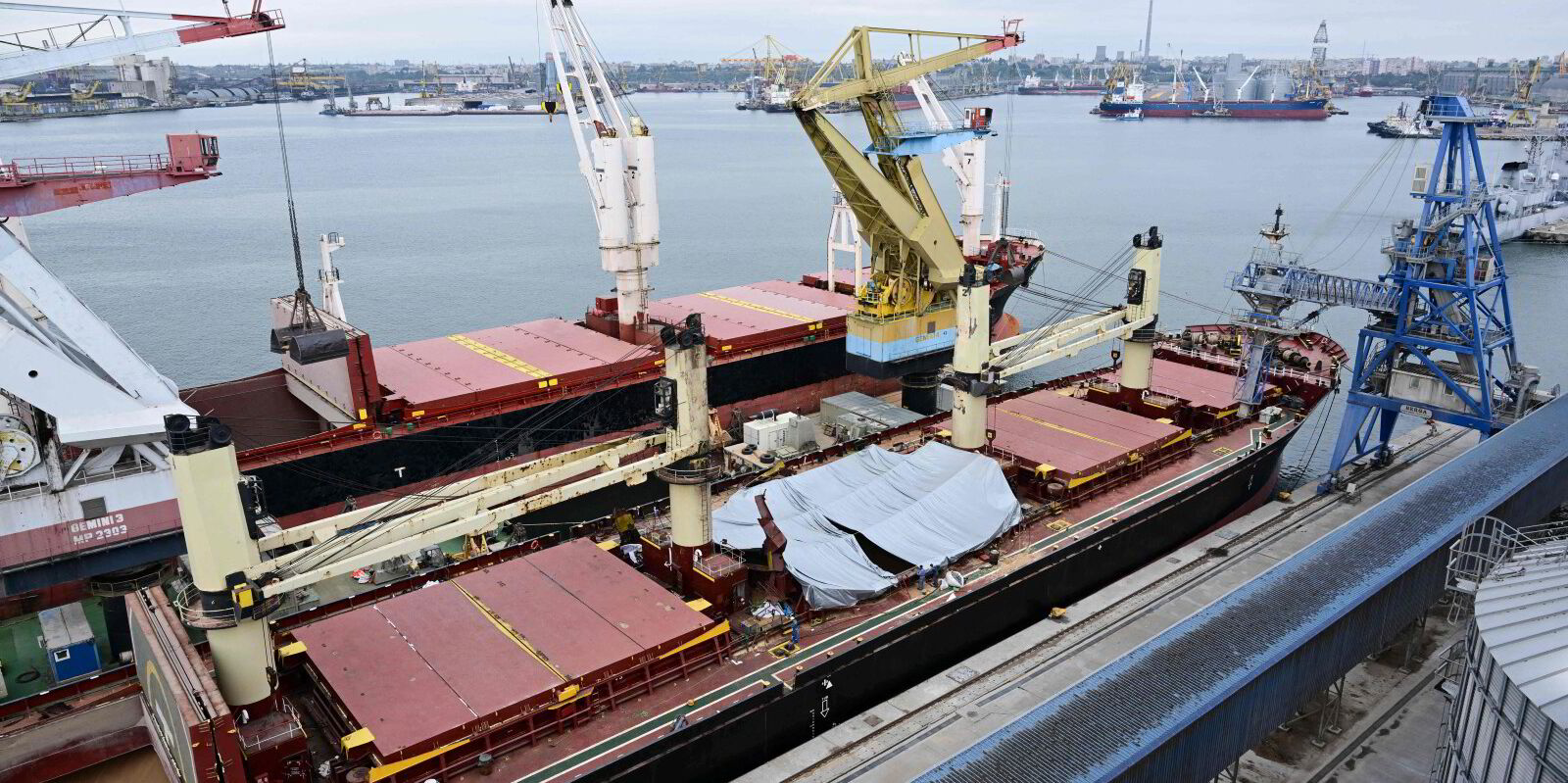Another missile attack on a commercial ship and another death.
The theatre of conflict has shifted, but the story of a fatal strike on a cargo ship is a grimly familiar one in 2024.
There have been more than 100 attacks on commercial shipping in the southern Red Sea and the Gulf of Aden over the past 11 months, according to naval tallies. They have killed four seafarers.
This time, at a Ukrainian port, the victim was a local stevedore, while other people were injured.
As TradeWinds has reported, the attack on the 5,800-dwt Optima (built 2008) was the second on a vessel in 48 hours in the Greater Odesa region and appears to mark a significant change in Russian tactics in its war on Ukraine.
The earlier attack hit another general cargo vessel, the 6,273-dwt Paresa (built 1992), in the port of Yuzhny on Sunday.
Moscow claimed responsibility for the Paresa attack and published footage that shows smoke rising from the moored vessel.
The assault on the Paresa was the first successful, direct and unambiguous attack confirmed by the Russian Ministry of Defence on a merchant vessel in the Black Sea since the end of the United Nations grain corridor initiative in July 2023, according to security firm Ambrey.
Russia has continued to strike port facilities for months and Kyiv claims that Russia has hit more than 20 cargo vessels since the end of the UN scheme. The latest attacks mark an escalation — but why now is less clear.
Most of the ships, other than the 27,300-dwt Aya (built 1997), struck on 11 September, have been targeted in ports, which have been pounded regularly since the invasion of February 2022.
The attacks could be seen as a recognition that Ukraine’s grain shipments have continued comparatively smoothly despite the end of the UN Black Sea grain initiative and represent significant revenues.
There have been changes at the top of the Russian military — including the departure of defence minister Sergei Shoigu in May — and changes had been expected in the way the war was being waged.
And now the Kremlin has emphasised that vessels carrying Western-supplied weapons will be a target.
The manager of the Paresa denied that ammunition was being carried into Ukraine, and security firm Ambrey Analytics said the footage and the timeline of the attack do little to back up claims that the targeted vessels were transporting arms.
But that might not matter much. Regardless of what cargo is being carried, war risk insurers say the concerted nature of the attacks will put pressure on premiums.
By making the link between arms shipments and grain ships, Moscow is probably trying to dissuade shipowners from sending vessels to Ukrainian ports. And some may now decide the risk is not worth it.
It could be seen as an attempt to force Ukraine into some form of international vessel inspection programme, as under the former UN grain initiative, intended to prevent weapons shipments to its ports. But that’s not something Ukraine is likely to agree to.
It keeps shipping firmly in the crosshairs of the militaries of feuding nations, seeking to disrupt military and civilian supply lines.
There are alternatives to the Red Sea — and seafarer unions have made clear that shipowners need to divert their vessels. Many have done so.
But for Ukraine, the feasible alternatives for shipping grain are not so obvious. It remains to be seen how many seafarers will pay the price for that.





